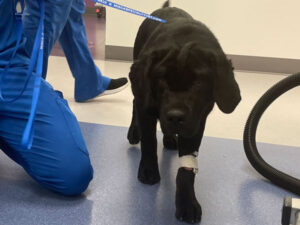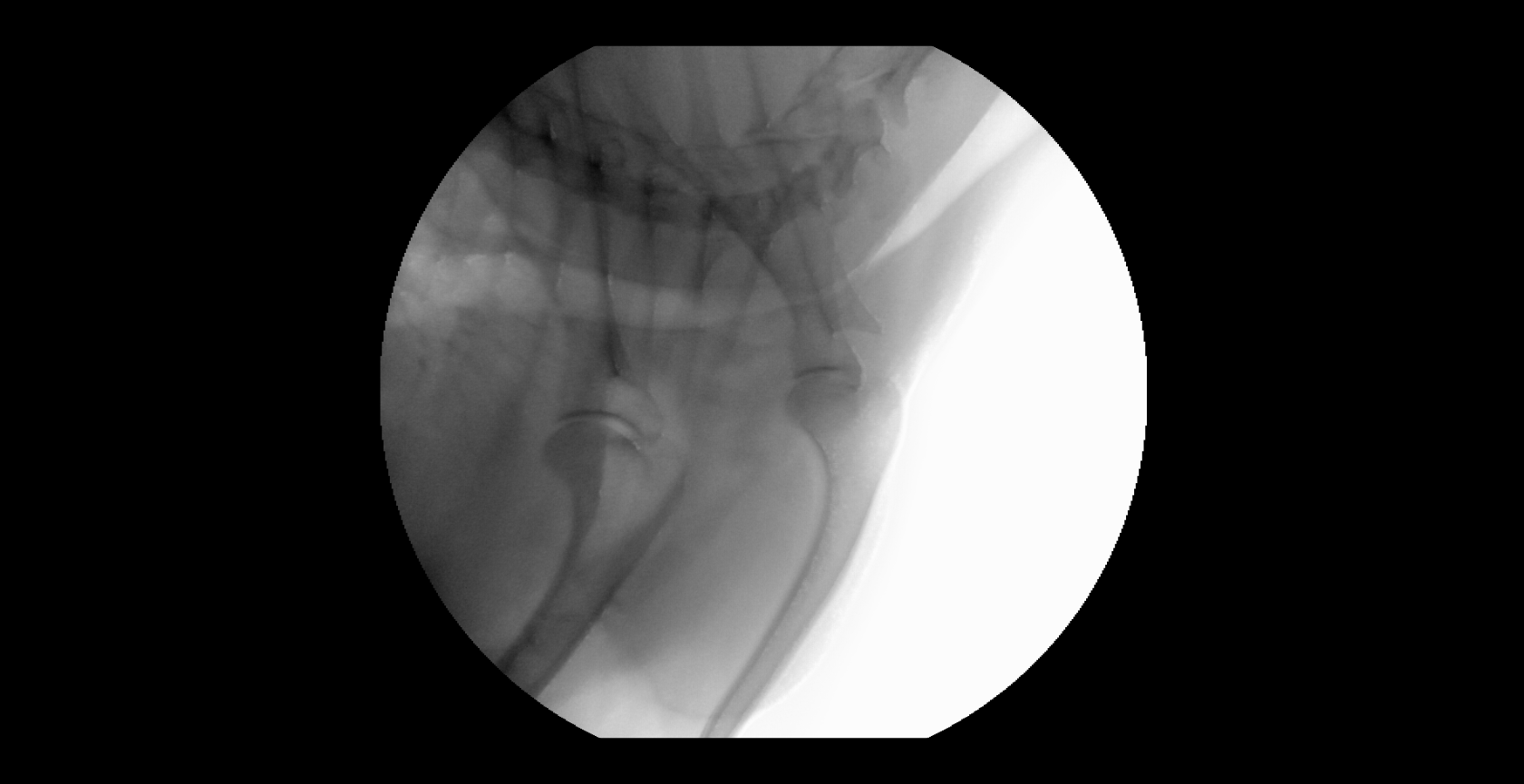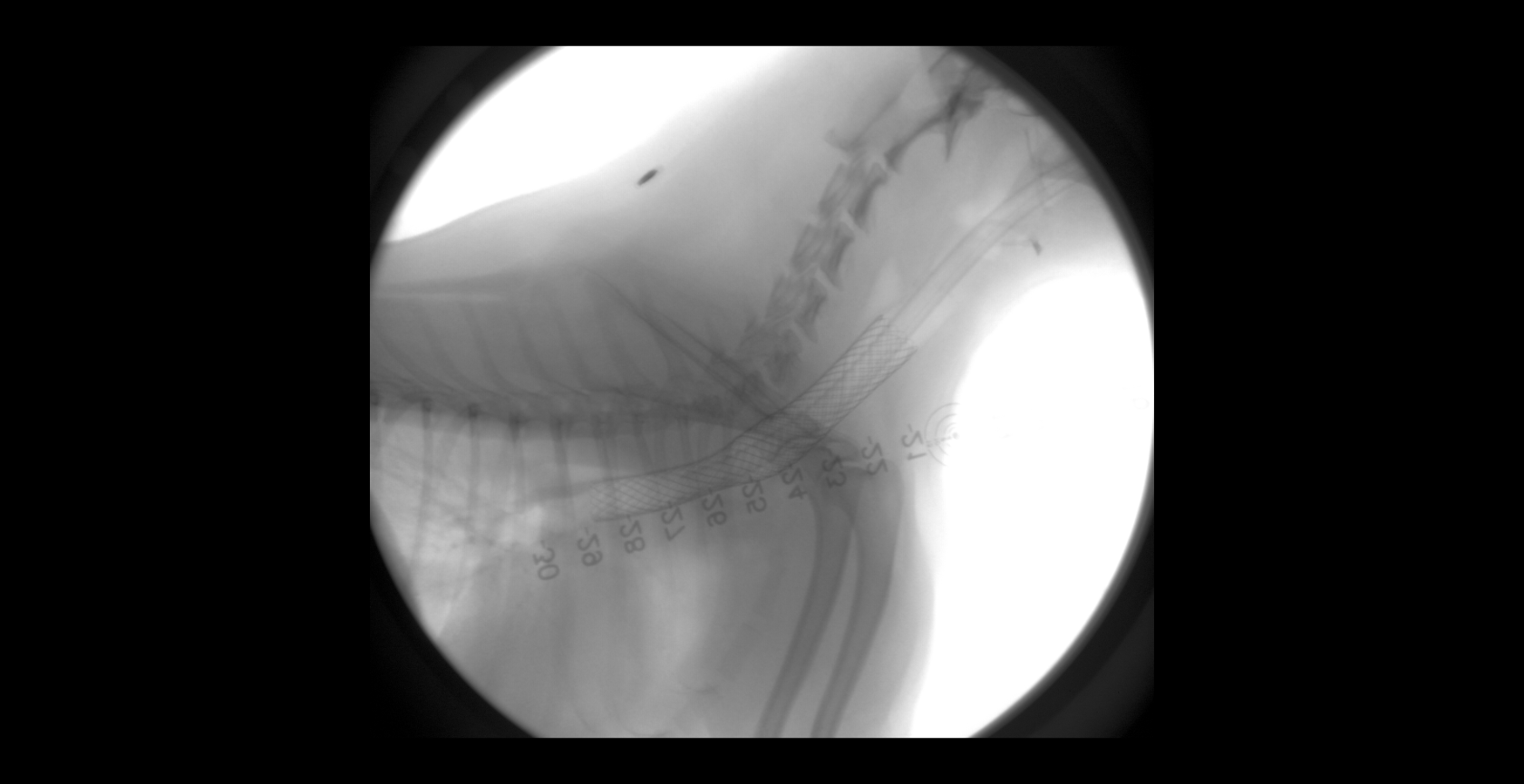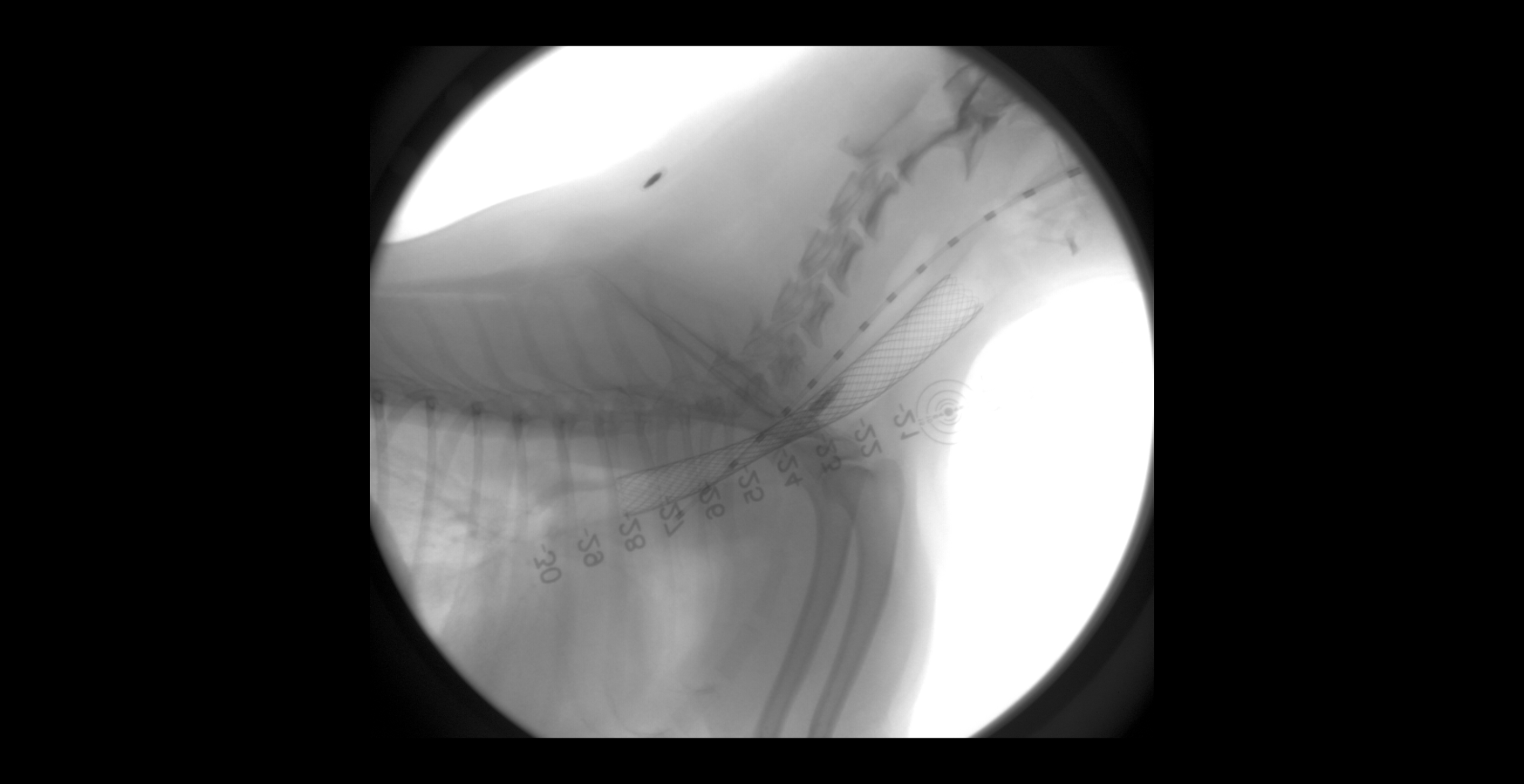Percutaneous Transvenous Coil Embolization (PTCE)
Portosystemic shunts are relatively uncommon congenital vascular anomalies that shunt blood from the abdominal organs around the liver and to the heart, thereby preventing detoxification of the shunted blood. Percutaneous transvenous coil embolization (PTCE) is a minimally invasive procedure using fluoroscopy to place intravenous coils to occlude the shunt vessel. PTCE results in a faster recovery, better outcome, reduced complications, and less mortality.

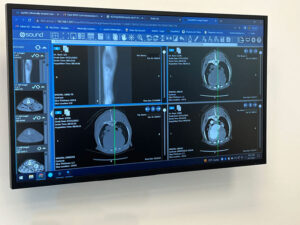
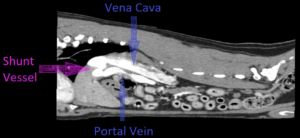 Your pet must be referred by your primary veterinarian. You and your pet will have a consultation with our specialists, and they will discuss your pet’s condition and the treatment options. Medical management will be initiated consisting of an antibiotic, lactulose and a low protein diet. These medications reduce the signs of hepatic encephalopathy and can help with postoperative management. The goal is to taper off of the medications after the shunt is repaired. All dogs with intrahepatic porstosystemic shunts (IHPSS) are placed on omeprazole for life. This is an acid reducer that has improved the outcome of dogs treated for IHPSS by reducing their propensity for gastrointestinal bleeding.
Your pet must be referred by your primary veterinarian. You and your pet will have a consultation with our specialists, and they will discuss your pet’s condition and the treatment options. Medical management will be initiated consisting of an antibiotic, lactulose and a low protein diet. These medications reduce the signs of hepatic encephalopathy and can help with postoperative management. The goal is to taper off of the medications after the shunt is repaired. All dogs with intrahepatic porstosystemic shunts (IHPSS) are placed on omeprazole for life. This is an acid reducer that has improved the outcome of dogs treated for IHPSS by reducing their propensity for gastrointestinal bleeding.